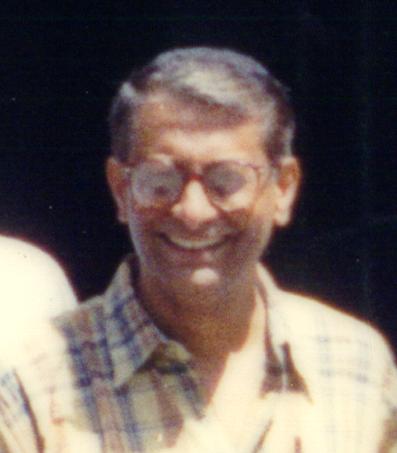
 |
Teaching: St Xaviers, SXCC and Presidency College
Dr Ray then returned to India and from Nov. 1978 was teaching at the St Xaviers College in Calcutta (initially as Lecturer and then from Nov .1991 as Reader). In 1984 Prof Ray helped set up the St Xaviers College Computer Centre (SXCC) and from May 1985-Feb 1987 was its Assistant Director (Academic). From Nov. 1985 onwards he was also a part-time lecturer at the evening courses of the SXCC & Computer Society of India. Courses he taught included BASIC & FORTRAN for scientific & commericial applications, Computer Logic & Organization, Data Structures, Structured Programming, etc. Between Sept. 1991 and May 1997 he was an invited honorary lecturer in the M.Sc. course on Physics (Calcutta University) at Presidency College, Calcutta where he taught Solid State Physics and the Physics of Semiconductor Devices.
Fulbright and Ramavataram Fellow, 1997-1998
In July 1997- June 1998 Prof Ray went to the USA on a Fulbright Fellowship Travel Grant and spent a year there as the fifth APS Kilambi Ramavataram Fellow. [The Ramavataram Fund was established in 1983 by the family and friends of Dr. Kilambi Ramavataram, an Indian-born teacher and researcher in nuclear and molecular physics who died in 1977. Its aim is to improve undergraduate physics teaching in India by allowing outstanding Indian physics teachers to visit institutions in North America, to observe and study teaching methods. Recipients are named by a Ramavataram fellowship selection committee in India.] Dr Ray spent the first nine months of his visit in Michigan State University, East Lansing, Department of Physics, and the final three months at the Centre for Beam Physics, Lawrence Berkeley National Laboratory at Berkeley. At MSU, he took part in developing and implementing an introductory-level general physics course called "Multimedia Physics." Instead of attending lectures, students will learn the material from a Website, using their respective computers. Each can then follow the course according to their convenience and pace of understanding. "Apart from text, the material we present online includes simulations and animations, both interactive," Prof Ray had said, adding that it also included online video of live experiments and phenomena, including sound. Other interesting features include individualized home-work problems, with the software giving "hints" tailored to mistakes made by the student. At Berkeley, the medium and the tools of the work were similar, but the challenge was at the "content" level - to cull matter from postgraduate/research level physics of particle beams in accelerators that may interest upperclass physics majors and beginning graduate students. In a project funded by the APS Division of Physics of Beams, Prof Ray prepared a content for a site on Beam Physics to attract more people to this field. Prof Ray had hoped to make available the wide variety of physics educational software that he was exposed to during his fellowship tenure to students in India. "They take learning to a higher order of magnitude," he had said, adding that physics teachers in India are becoming aware of this mode of instruction.
Physics Education
Prof. Ray was a member of the Academic Council of the Indian Association of Physics Teachers (IAPT). He was the Regional Joint Secretary and Secretary of the Regional Council of IAPT from 1994-95 to 1996-97. Besides formulating academic programs and setting goals for the all-India body he was involved in organising workshops, refresher courses and seminars for Physics teachers. He was also a member of the Syllabus Committee for the proposed Integrated Ph.D. program in Pysical Sciences at the S N Bose National Center for Basic Sciences (SNBNCBS), Calcutta. With Dr P Ghose (SNBNCBS) he prepared a computer aided instruction package "Bose and his statistics" for undergraduate science and maths students in January 1994. He was a member of the editorial committee of the quarterly journal Physics Teacher in 1986-88. Prof Ray was also a Council Member of the Indian Physical Society during 1986-88 and 1992-94.
Physics Research
Prof. Ray was co-investigator in a couple of research projects on ion implantation simulation: Process Simulator Program: Simulation of Diffused & Implanted Profiles (May 1989-Nov 1990) and Upgradation of 1-Dimensional STEPS package to 2-Dimensional Simulator: Implantation Module (Dec 1992-Dec 1995), both carried out at the Department of Radio-Physics and Electronics, Calcutta University.
Computers
Prof. Ray was actively involved in computer education in Calcutta. Besides his activity at the SXCC and Computer Society of India, he was a member of the organizing committee of two international VLSI conferences organised by the VLSI Society of India in 1994 and 2000. During Sept. 1978-June 1980 he was part-time software consultant to Instruments Systems (Eastern) Pvt. Ltd. developing system-testing, debugging and peripherial interfacing software for various microprocessor based products.